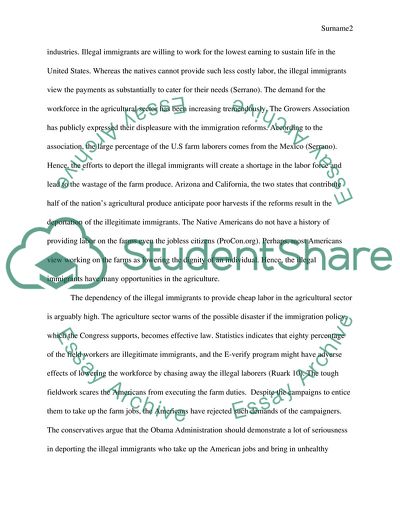The US Farmers Depend on Illegal Immigrants Research Paper. https://studentshare.org/human-resources/1868909-us-farmers-depend-on-illegal-immigrants
The US Farmers Depend on Illegal Immigrants Research Paper. https://studentshare.org/human-resources/1868909-us-farmers-depend-on-illegal-immigrants.


